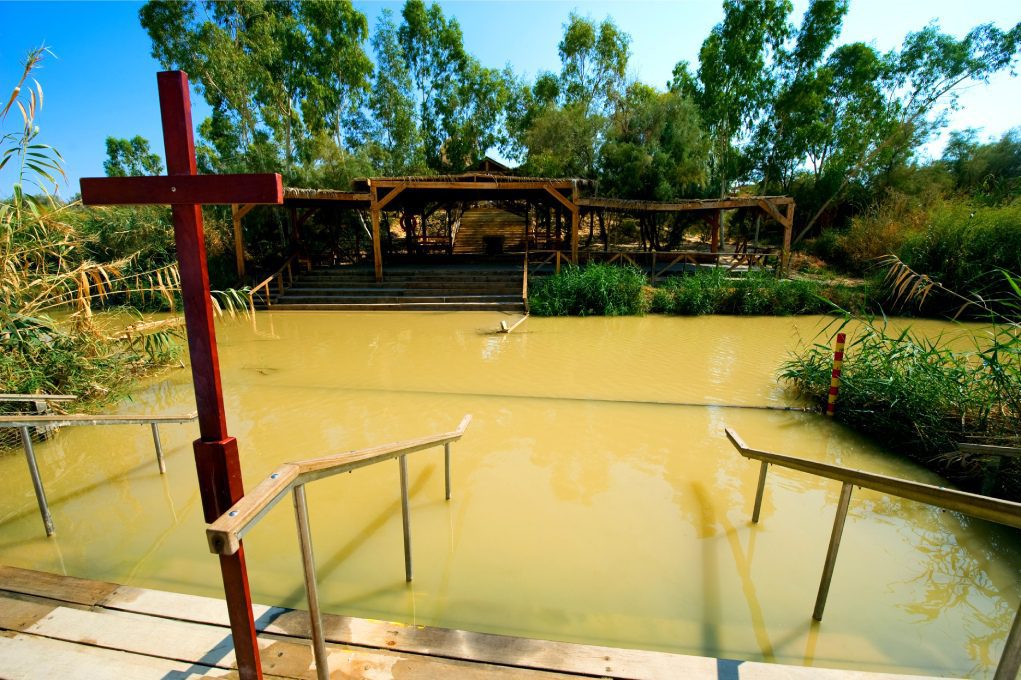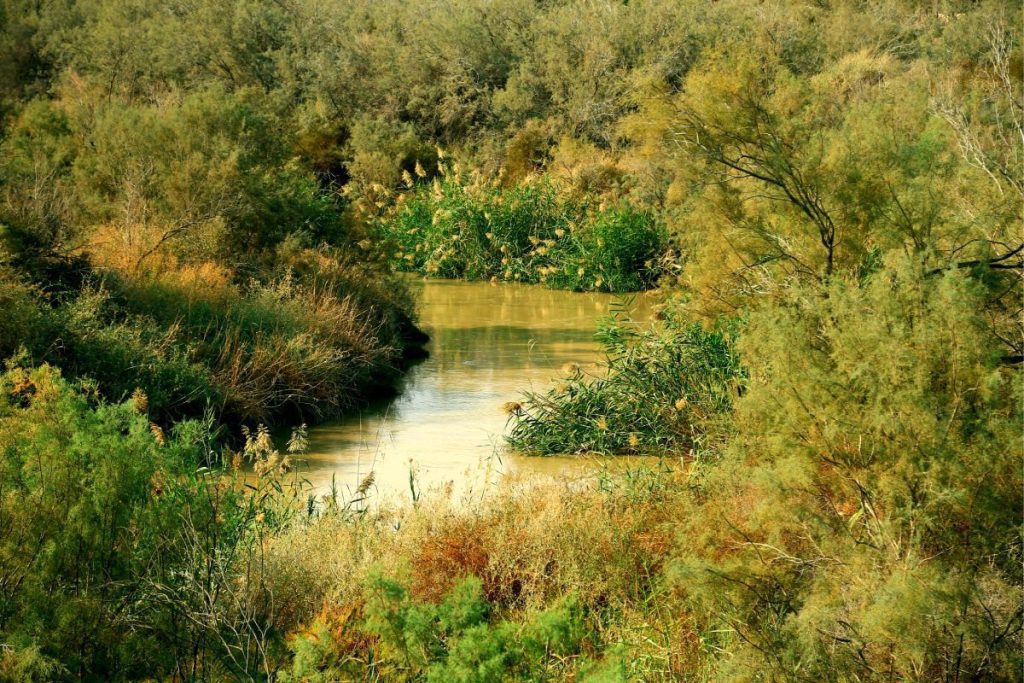The Religious Value of the River Jordan as I am sure you can imagine is outstanding. But before elaborating on the subject I would like to give my readers some other interesting info about Jordan River. So the Jordan River flows through the Syrian-African Rift; along with the State of Israel from north to south. Today the river serves as the official border with Jordan. As I am sure you can imagine the Jordan is one of the most famous rivers in history and literature; especially historically and religiously. The total length of the river from its sources at the foot of Mount Hermon to the Dead Sea is 251 km; its flow at the estuary to the Sea of Galilee is about half a billion cubic meters per year.

QASR AL-YAHUD – THE TRADITIONAL LOCATION WHERE JOHN BAPTIZED JESUS
The main sources of Jordan water are the rains and snows that fall on Mount Hermon. They feed the Jordan by flow; underground infiltration, and flowing in the three streams that make up the sources of the Jordan:
Hermon River (Banias), which originates at the foot of Mount Hermon. Nahal Dan; which springs at the foot of Tel Dan. Nahal Snir (Hasbani); the longest of all the tributaries, originating at the foot of Mount Hermon in the Lebanese area. There are also masses of the Iyun River; which originates in Lebanon, with the sources of the Jordan, but this river used to flow directly into the Hula Lake; and only after the lake dried was it channeled directly to the channel of the Snir River and the Jordan.
The Religious Value of the River Jordan: In The Hebrew Bible
The Jordan River played an important strategic role in the Bible: the Jordan is mentioned several times as the eastern border of the land of Canaan and as a divider between their land east of the Jordan of two and a half tribes of Israel and the lands of other tribes of Israel.

YARDENIT BAPTISMAL SITE – A POPULAR LOCATION FOR TOURIST TO BAPTIZE NEXT TO THE SEA OF GALILEE
Furthermore, the book of Joshua tells of the crossing of the Jordan – the entry of the children of Israel into the land of Canaan through the Jordan River, when in the settlement of Adam the water stood on one side and the flow of the Jordan ceased to the Dead Sea. Also, the book of Judges also tells of the people of the tribe of Ephraim who blocked the way in the crossings of the Jordan to the Midianites who were retreating from Gideon.
In the book of Kings – Elijah the prophet crossed the river by crossing it using his mantle and when he ascended to heaven the same miracle happened to Elisha the prophet. And finally, Naaman, the army minister of Aram, was healed of his leprosy after being baptized in Jordan seven times.
The Religious Value of the River Jordan: In The New Testament
The New Testament states that John the Baptist baptized unto repentance in the Jordan (Matthew 3:5–6; Mark1:5; Luke 3:3; John1:28). These acts of Baptism are also reported as having taken place at Bethabara (John 1:28). Al-Maghtas ruins on the Jordanian side of the Jordan River are the putative location for the Baptism of Jesus and the ministry of John the Baptist
Jesus came to be baptized by him there (Matthew 3:13; Mark 1:9; Luke 3:21, 4:1). The Jordan is also where John the Baptist bore record of Jesus as the Son of God and Lamb of God (John 1:29–36). The prophecy of Isaiah regarding the Messiah which names the Jordan (Isaiah 9:1–2) is also reported in Matthew 4:15.
The New Testament speaks several times about Jesus crossing the Jordan during his ministry (Matthew 19:1; Mark 10:1), and of believers crossing the Jordan to come to hear him preach and to be healed of their diseases (Matthew 4:25; Mark 3:7–8). When his enemies sought to capture him, Jesus took refuge at the river in the place John had first baptized (John 10:39–40).


